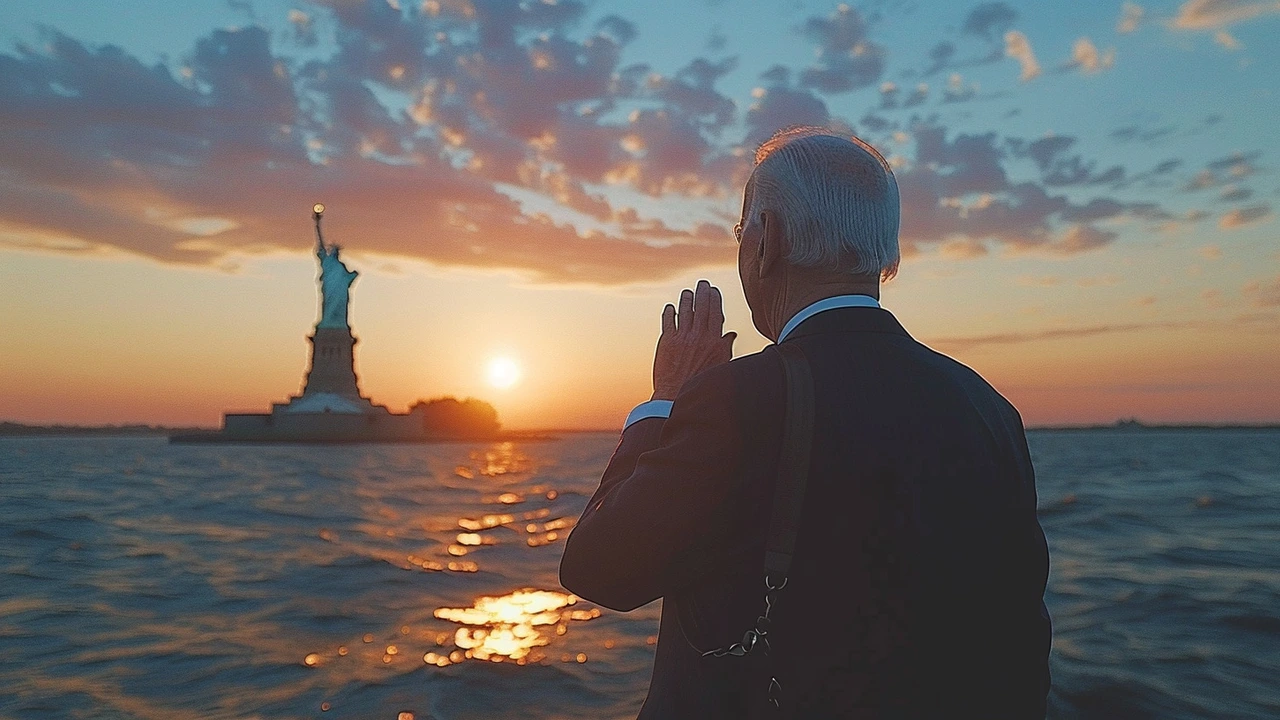Strategies for Democrats to Potentially Replace Joe Biden in the Presidential Election
 Jun, 28 2024
Jun, 28 2024
Possibility of Replacing Joe Biden as Democratic Presidential Candidate
With the presidential election looming, Democrats face uncertainties over Joe Biden's candidacy, especially following a tricky debate against Donald Trump on June 27th. Despite Joe Biden having secured enough delegates for the party's nomination, internal party concerns have been growing about his capability to win the national election. It opens a complex discussion on how Democrats might navigate such a significant change at this critical juncture.
Debate Performance and Rising Concerns
Joe Biden's performance during the televised debate was perceived as less impactful, igniting worries among both party elites and grassroots supporters. The stakes are high, with many in the Democratic Party questioning whether Biden remains the best candidate to face Donald Trump. Biden's health and vigor have been points of contention, with detractors citing his occasional verbal gaffes as potential liabilities. This backdrop has intensified discussions around the possibility of replacing Biden as the standard-bearer come November.
The Decision to Step Down is Biden's Alone
As per current party rules, the power to decide whether to continue rests exclusively with Biden himself. Having clinched enough delegates to secure the nomination, there is no formal mechanism within the Democratic Party that can force him out. This sets the stage for a delicate situation where only a voluntary decision by Biden to withdraw could enable a change in candidates. Even so, the process thereafter is far from straightforward. Once a candidate has amassed the required delegates, any change must come through political maneuvering among party insiders rather than through a democratic process involving primary voters.
Potential Replacements: Courting the Party Elite
If Biden decides to step aside, potential replacements would have to court the party's elite. Loyalists such as Kamala Harris, Elizabeth Warren, or Pete Buttigieg could emerge as possible alternatives. However, rallying support from primary election voters becomes secondary, as the final decision lies in the hands of the party leadership. This scenario could disrupt the unity within the party, leading to factionalism and eroding confidence among the electorate.
Democratic National Convention: From Pageantry to Tense Negotiations
Should Biden decide to withdraw, the Democratic National Convention in Chicago, scheduled for August 19th-22nd, would transform from a predictable display of unity to a battleground of behind-the-scenes negotiations. This potential shift hearkens back to the conventions of yesteryears, where such drama and uncertainty were more common. Comparisons may be drawn to the Republican Party's 1976 convention where Gerald Ford faced a stern challenge from Ronald Reagan. Such an atmosphere could divide the Democratic Party, undermining efforts to mount a cohesive campaign against Donald Trump.
Implications of a Contested Convention
The prospect of a contested convention is replete with uncertainties. Not only could it lead to a deeply divided party, but it also runs the risk of disillusioning supporters and donors. A protracted battle for the candidacy might leave scars that the eventual nominee would struggle to heal. Moreover, such turmoil provides ample fodder for opponents and media, potentially leading to unfavorable optics and weakening the party's stance in the general election.
Historical Lessons and Future Path
Historically, contested conventions have often foreshadowed electoral difficulties. The Democratic convention of 1968, marked by profound discord and conflicts, cost the party heavily in the subsequent election. Learning from these precedents, Democratic leaders have the arduous task of managing internal differences judiciously while presenting a united front. It will be crucial to balance the negotiation process with transparency and inclusivity to maintain the trust of their base.
Conclusion: Navigating through Uncertainty
In conclusion, the Democratic Party finds itself at a crossroads. Replacing a sitting presidential candidate is not just a procedural challenge but a test of the party's resilience and adaptability. Engaging in comprehensive internal discussions, ensuring the concerns of all factions are addressed, and mitigating the risks of fragmentation are essential. While the journey ahead is fraught with uncertainties, adept leadership could turn this crisis into an opportunity for revitalization, paving the way for a robust challenge in the November election.